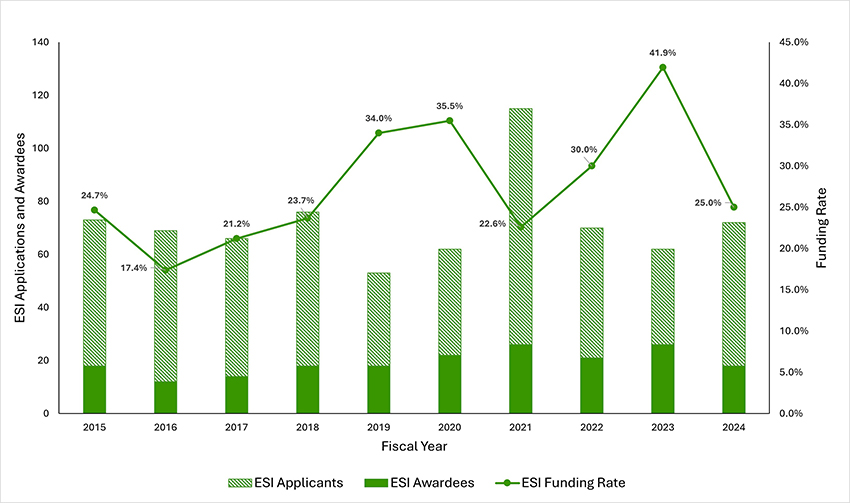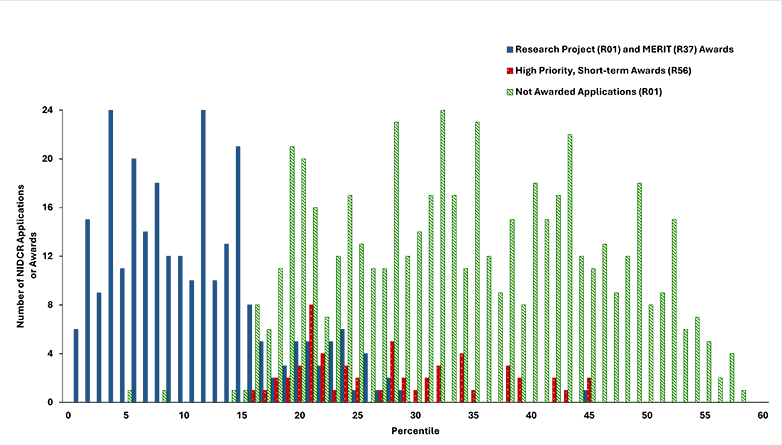R01 Applications from Early Stage Investigators
Funding Rates of R01 Applications from Early Stage Investigators
NIH uses funding rates as a metric for describing the likelihood of an applicant getting funded. Funding rate is defined as the number of awardees divided by the number of unique applicants in a fiscal year. Below, we provide NIDCR funding rates for Early Stage Investigator (ESIs) R01 applications. An ESI is a Program Director/Principal Investigator (PD/PI) who has completed their terminal degree or clinical training within the past 10 years and who has not previously competed successfully as PD/PI for a substantial NIH independent research award. For more information on NIH success rates, please visit NIH Research Portfolio Online Reporting Tools(RePORT) Success Rates webpage.
NIDCR ESI Funding Rates (FY15-24)
R01 Applications by Percentile Score from Early Stage Investigators
NIDCR supports a varied range of programs and grant mechanisms and is committed to funding as many meritorious projects as possible, while allowing the flexibility needed to support selected program priorities and respond to emerging scientific opportunities.
Submitted applications undergo peer review and all receive a priority score, which is a measure of scientific and technical merit. Most priority scores are converted to a percentile score. R01 applications are funded based on merit, new and emerging scientific opportunities, Institute priorities, and other relevant factors, such as our commitment to support early and new stage investigators (see above for ESI and EI definitions). Based on recommendations by NIDCR staff and the concurrence of the National Advisory Dental and Craniofacial Council, a subset of R01 applications are converted into R56 high-priority, short-term awards.
Number of Funded and Unfunded ESI R01 Applications (FY14‒23)
Percentage of NIDCR-Funded R01 Applications by Percentile Score: Early Stage Investigators vs. Experienced Investigators (FY14‒23)
August 2025



